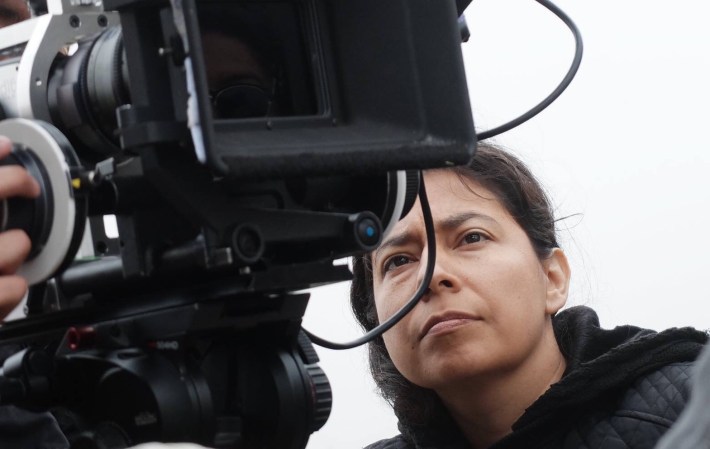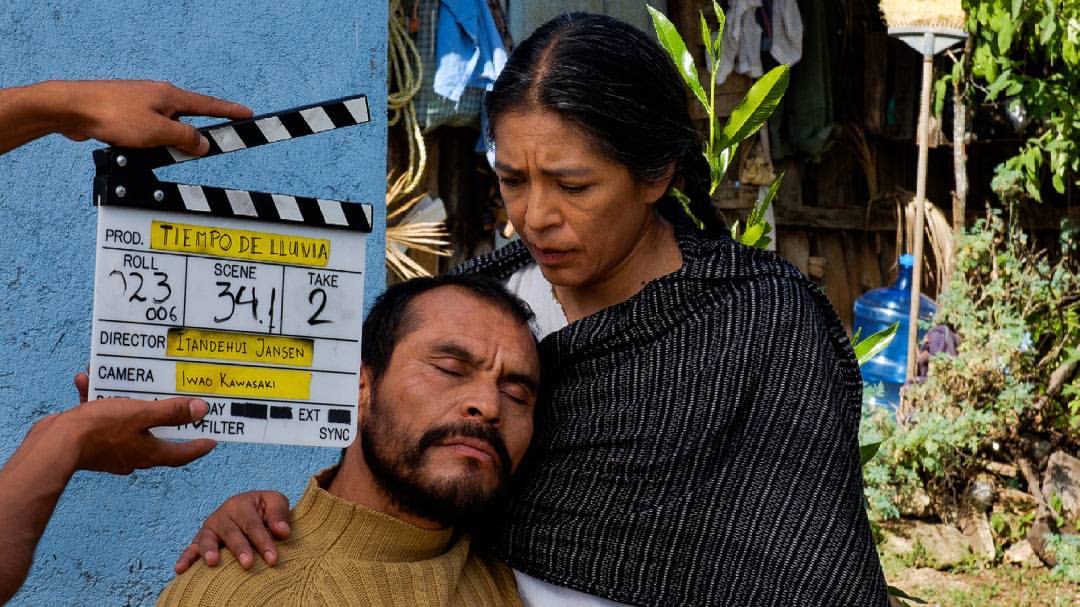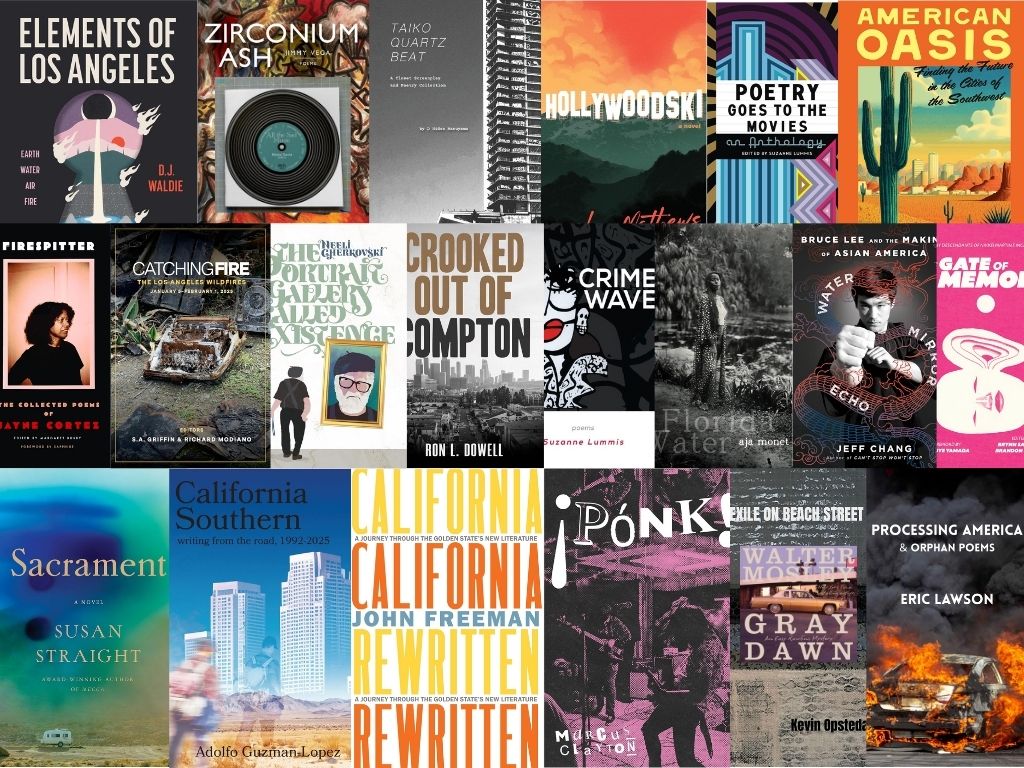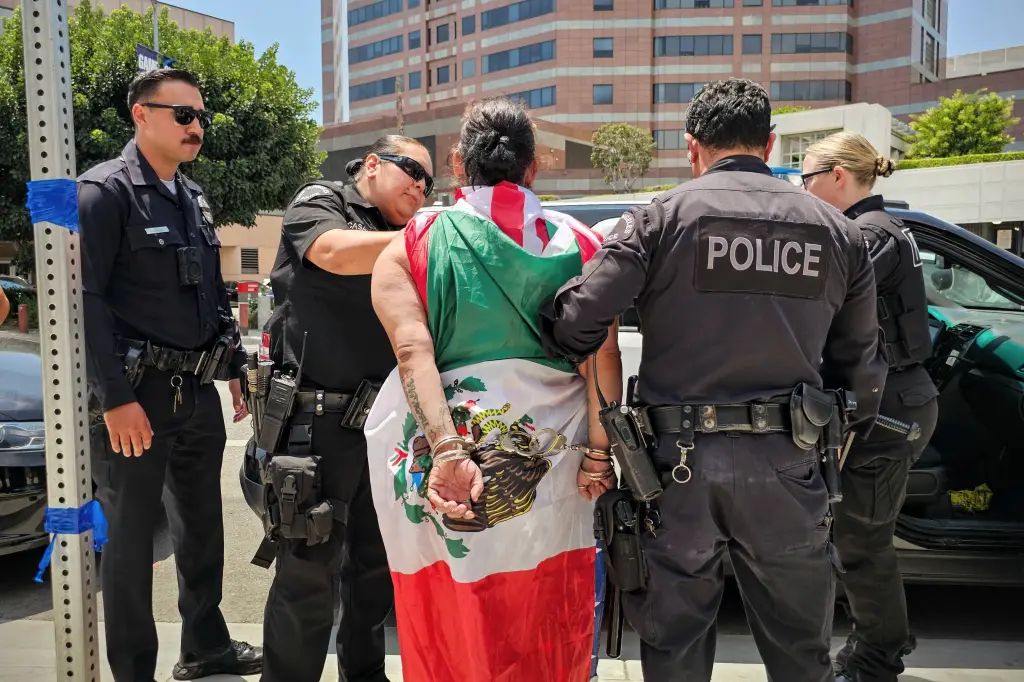[dropcap size=big]I[/dropcap]t’s not often that we get a film that wrestles with the crisis of identity in native communities. It is even more uncommon when that story comes from a native voice and this film tells the truth of the Mixtec people of the Mexican state of Oaxaca. In Times of Rain delicately achieves both. The film’s writer and producer Armando Bautista and director Itandehui Jansen both come from Mixtec backgrounds.
The film, released in Mexico as Tiempo de Lluvia, recently won the Best Emerging Film award at the Oaxaca International Film Festival and recently premiered at the Guanajuato International Film Festival. Confirmed forthcoming screenings are scheduled for the Seattle Latino Film Festival and The ImagineNative Film Festival in Toronto.
No screening has been locked yet for Los Angeles, but L.A. Taco was able to get an exclusive first look before any U.S. media outlet.
“When the film screened at the Oaxaca film fest, there were just not enough tickets,” Bautista told L.A. Taco. “The theatre made an exception and allowed some audience members to sit on the stairs, but even so there were many many people who were unable to get a ticket.”
RELATED: Support Stories Like This & Become a Member of L.A. Taco Today!
[dropcap size=big]T[/dropcap]he film follows characters in the Mixtec community and explores how they are separated but simultaneously connected. The story centers around Soledad, a healer and elder of a Mixtec pueblo, and her daughter Adela who leaves to Mexico City in search of opportunity. Adela leaves home to try to earn extra money in the city with hopes of bringing her son Jose to be with her. Additionally, we follow the storylines of a couple who suffered a loss of a child and an ill man trying to atone for past sins.
Thematically the weight of the film is concentrated around loss of nation, family, and self. In Times of Rain spins several plates: geopolitics, crisis of identity, and class issues. The characters lead disparate lives but are tethered thematically and culturally. The title of the film conjures dark imagery but also shows the vitality of the Mixtec.
L.A. Taco got to talk to Bautista about these themes, the artistic origins of the film, and what it felt like to win in Oaxaca.
RELATED: ‘Being Black Esta De Moda’ ~ Afro-Chicana Director Ebony Bailey Is Examining Blackness in Mexico

L.A. Taco: How did you and your team feel about winning, especially in Oaxaca?
AB: Of course it means a lot to us to win a prize in Oaxaca. But above all we were extremely moved by how the film was received by the audience. The director [Itandehui Jansen] and part of the team presented the film in the community where we filmed, and almost the entire village joined for the screening. We were absolutely overwhelmed and had not expected such a turn out for the film. It shows that there is a real hunger and interest for films about local communities. So yes we’re thrilled about being able to screen the film in Oaxaca, and we hope to be able to take the film soon to the U.S.

I think it's safe to say that your personal life has influenced this story. What made you want to tell this story?
When I was 10 years old, my older brothers took me to Mexico City to live with them so that I could go to school. Until then, I had been living with my parents and younger siblings in a small rural village, Santa María Apazco, Nochixtlán, Oaxaca. This obviously had a profound impact on my life and I have since long wanted to write a story about this experience. In time, I understood that I was not the only one who went through this.
All my brothers and sisters emigrated at a young age without our parents to Mexico City. Many indigenous persons in Mexico city have a similar story to tell. Opportunities to study and work are extremely limited in rural communities, and people feel they need to leave in order to have access to education and a better life. This process of migration was difficult and often painful in many ways. And, as it continues to happen today, I wanted to incite a reflection on what people leave behind and what happens to community and cultural continuity in this process.

I noticed that loss plays a major role in the lives of these characters. Did a personal loss influence this story?
Having to leave the village in such a way at such a young age has felt as a terrible loss in my life. In a way, the story is mainly about the loss of innocence and the fragmentation of family. It took four years before I could return to the village and being far away from my parents, particularly my mother was really painful.
I remember that before leaving I used to herd sheep together with my mother, we would talk a lot in the mountains and she would tell stories. In the city, everything changed. I missed the mountains and countryside, my mother’s stories and voice.
Also I found the environment in the city very hostile. At school people would make comments about my dark skin and I soon learned to hide the fact that I spoke Mixtec. When I returned to the village I discovered I could no longer go back to the way things were before I left. Everything had changed, my parents, the village, and I myself were different.

RELATED: More 'In Times of Rain' Details
What do people get wrong about representing native communities in film?
Of course there are many cases of explicit racist or just stereotypical representation. It is also very common that indigenous characters are represented as mythical beings of the past, or at least on their way to become part of the past. I’m thinking for example of Jimmy Nelson’s book Before they Pass Away. Pastness or emphasis on these characters being the last remaining Indigenous persons is an extremely common and persistent trope.
The ways of life in indigenous communities are changing; but this is a complex process. People often live in intercultural environments combining aspects of indigenous culture, and non-Indigenous culture, and these cultural changes do not mean that people have lost their roots, language or identity. Also, many representations fail to address the active projects of assimilation undertaken by governments and neocolonial powers. Representations of Indigenous communities often fail to address how society has contributed to the discrimination, marginalization, and exploitation of these communities.
A different issue is that indigenous writers, storytellers, and filmmakers have limited access to film production. So in Mexico, quite often films are made about indigenous peoples but not necessarily by indigenous filmmakers. This might lead to stories in which the indigenous characters are not the main characters but mainly serve the story line of a non-indigenous character. There is a growing community of indigenous filmmakers in Mexico working in the field of both documentary and drama. And I hope these films by indigenous filmmakers will find an audience and adequate appreciation.







